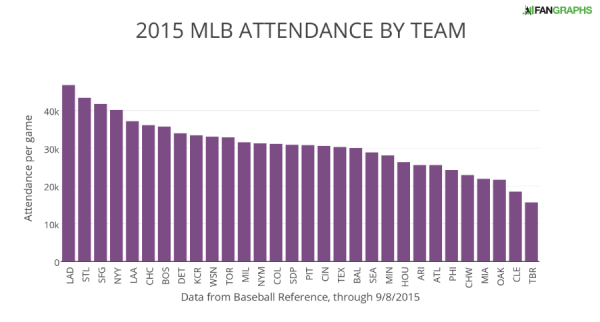April Attendance Matters for MLB
Attendance in April isn’t likely to make or break a team’s season at the box office. Numbersgenerally trends upwards from the beginning to the end of a season. Nor is that surprising: the weather gets better, kids get out of school, and the games generally have greater playoff implications.
April’s attendance numbers are more often based on a combination of expectations and tradition. Teams that are expected to be competitive — the Cardinals, the Dodgers, the Giants — are going to sell a lot of tickets. As the season progresses, of course, clubs that fall out of a playoff race can expect a decline in attendance relative to their more competitive seasons. Conversely, teams that have surprisingly good years can see increases. Nevertheless, in terms of predictive measures of yearly attendance, a club’s April attendance is more significant than its April win-loss record. For teams like the Mets and Royals, that’s bad news. For the Orioles and Phillies, however, the outlook is much better.
Early on in the season, here’s what the average attendance per home game looks like for every team.

The Dodgers, just like they do every year, have the early lead and will likely continue to have one all year. That’s not surprising: they play in a massive stadium and even bigger market. The Cardinals, Giants, and Chicago Cubs are up there, too, with the defending World Champions benefiting not only from a great team but a renovated ballpark. The Blue Jays were a middle-of-the-pack team just a few seasons ago, but have shot up the last few years following a string of successful seasons. The general lesson here? Be competitive and the people will come — especially in larger markets.



